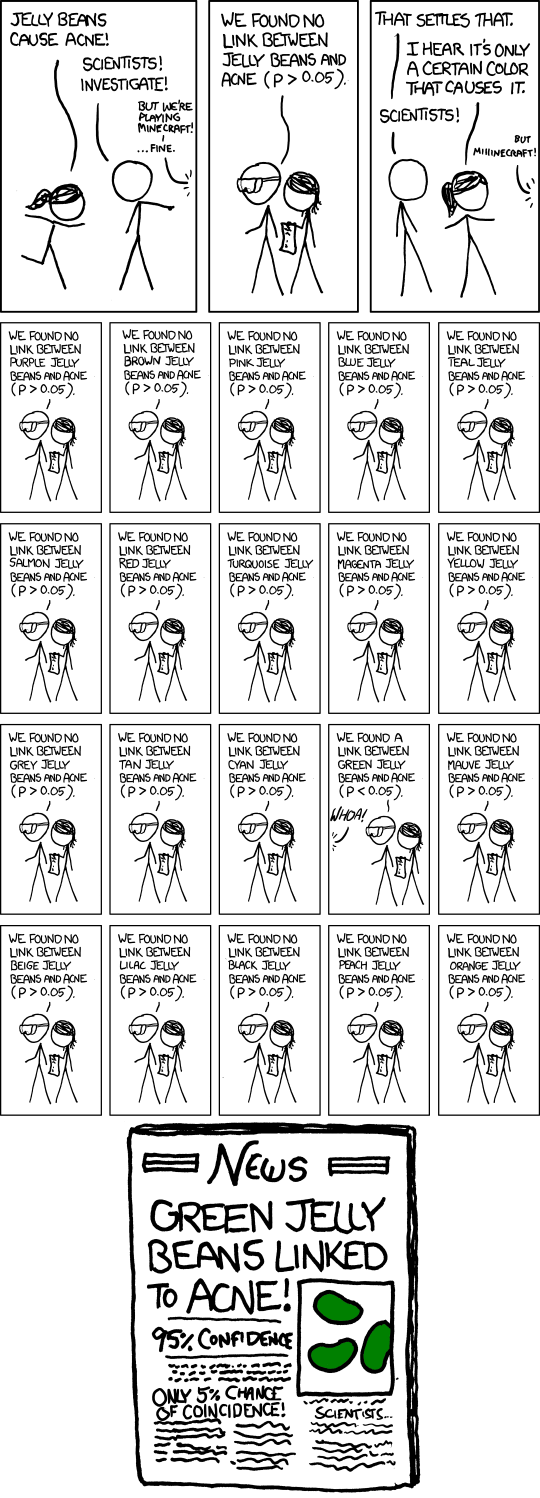Nearly every day, newspapers report on new scientific breakthroughs. Scientists provide measures of their uncertainty in the results, expressed as a p-value.
The p-value is a statistical measure of the randomness of the results; a lower p-value indicates that the reported result is not likely due to chance. In scientific studies, a p-value of 0.05 (or 5% likelihood of the result being due to random chance) is considered significant. Put another way, if the same test were done 100 times, a result would have to happen 95 times out of 100 to be considered significant.

Scientists test their hypotheses multiple times to be sure of the significance of their results. Even though one test may reach a significant p-value, there’s still that 5% chance that it could be due to chance.
Unfortunately, that doesn’t make for good newspaper headlines. So, when you read news about science, think like a scientist and look at the data and results with a scientifically-critical eye.